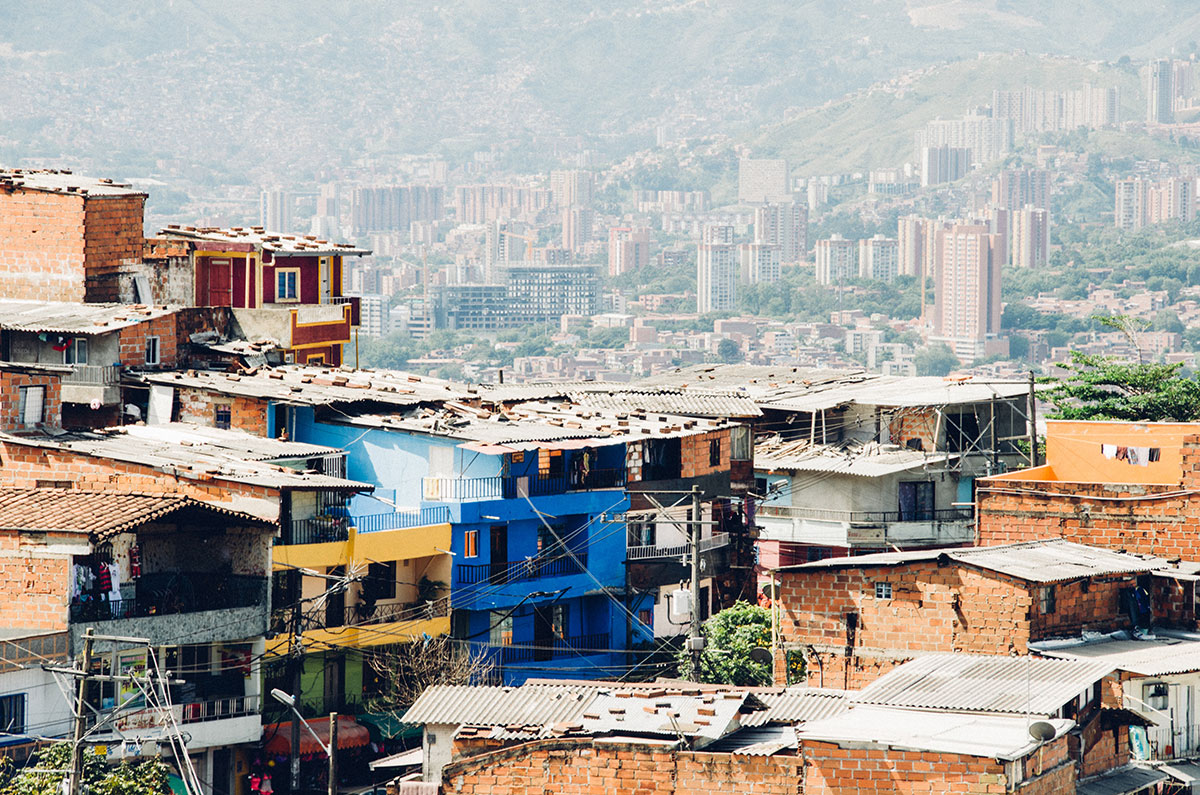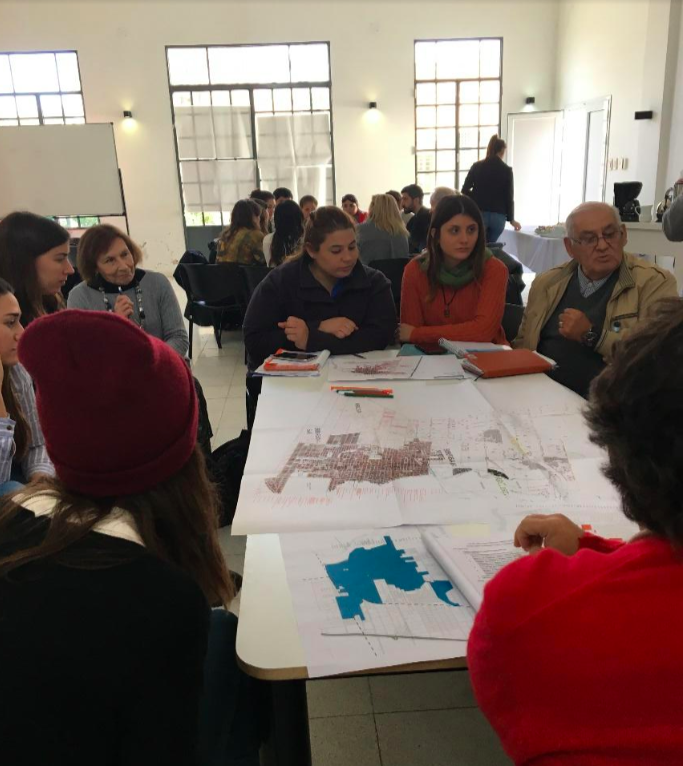
Towards Urban Risk Governance
October 2, 2019 — The Big Picture
Urban risk governance serves a critical role for increasing resilience and ensuring inclusive and sustainable development in our cities. Local governments need to form coalitions and work with a variety of stakeholders that will transcend power dynamics to achieve disaster risk reduction (DRR) and resilience building in their communities. However, recent assessments have shown that such coalitions are difficult to form in traditionally closed societies with little to no civil society involvement in development, or that it can take different forms based on local contexts and needs.
What is Urban Risk Governance?
The United Nations Development Programme has defined disaster risk governance as “the way in which the public authorities, civil servants, media, private sector, and civil society coordinate at community, national, and regional levels in order to manage and reduce disaster and climate-related risks”[1]. As this definition implies, risk governance is a more complex concept than merely having the necessary legislation and institutions in place. It requires broad participation for effective implementation of DRR and resilience building strategies and plans [2]. Risk governance at the urban scale should bring forth DRR stakeholder participation at all stages of development, from decision-making to planning and implementation [2]. It should also incorporate formal and informal contexts, as the most vulnerable populations, both in informal settlements and inner cities, are usually left out of the planning and decision-making processes. The inherent risks in urban areas intensify when the power dynamics come into play and the vulnerable populations have no say in decision-making, creating a cycle of impoverishment, disempowerment, and increased vulnerability to disasters and climate crisis.
How does Urban Risk Governance translate in different regional and local contexts?
A recent study by the Making Cities Resilient (MCR) Campaign, which was launched by the United Nations Office for Disaster Risk Reduction (UNDRR) and its partners in 2010 in order to raise awareness on urban risk reduction and support local governments’ efforts with tools, guidance, and partnerships, have found regional differences in urban risk governance process, such as forming stakeholder partnerships and increasing societal capacity for risk reduction and resilience building. According to the study that assessed 215 cities that have used the Disaster Resilience Scorecard of the MCR Campaign, cities’ actions differ greatly in regional contexts in relation to Scorecard Indicators, in particular in relation to actions under Essential #7: Understanding and Strengthening Societal Capacity for Resilience (see Figure 1).

For instance, 46% of the 50 study cities in Africa stated that there was very little involvement from grassroots organizations and only 2% of them stated that community organizations that cover a significant proportion of the city’s population were actively participating in pre-event planning and post-event response in their city. Active community participation was most prevalent in cities across Asia and the Americas, where about 1/4th of the study cities (88 and 50 respectively) stated to have comprehensive community participation. Likewise, about half of the cities in Africa responded that there was no mapping of socially vulnerable populations and that only 14% responded to have some form of training in their communities. In contrast, about half of the cities in the Americas responded that once every six-months training programmes were conducted [3].
Another MCR Campaign study that examined local government powers for undertaking DRR and resilient building actions have found out that local government powers to increase societal capacity and form stakeholder partnerships for DRR and resilience “was high in all regions with the exception of the Arab States”[4]. In the Arab States, 25% of the 24 cities stated to have no powers and 28% of them stated to have no responsibility to identify and strengthen societal capacity”[4]. This study also observed that “authority to strengthen institutional and/or societal capacity and developing relevant partnerships have legal basis in regions such as the Americas, where civil society participation has long been part of the development agenda; whereas in the Arab States where this authority is very limited, little or no participation by civil society traditionally exists”[4].
Even in similar regional contexts, urban risk governance processes can take different shapes as local contexts and specific needs shape how stakeholders want to get involved and form relevant partnerships. A recent project that engaged with local governments and other key stakeholders to develop a participatory process for climate resilient and inclusive urban development in three cities across Latin America observed that the participatory process took different forms at each location [5]. Through this process, it was found out that stakeholder participation and collaboration, including the information and data they hold, lead to increased capacity and result in better, more contextually suitable resilience strategies and recommendations.
“Local governments have an important role to play in identifying and strengthening societal capacities to successfully reduce risk and achieve urban resilience in their communities.”
Stakeholders in each city argued that dialogue and participation spaces are essential for collaboration to advance urban resilience. For instance, stakeholders in Dosquebradas, Colombia stated that exchange and sharing of information between technicians and the community, as well as amongst different technical institutions is fundamental and solidified this outcome with an agreement between three technical organizations. In Santa Ana, El Salvador, stakeholders identified the need to create and maintain open spaces for citizen participation and initiated monthly climate change roundtables (mesas) to discuss issues towards developing feasible resilience options. In Santo Tomé, Argentina, stakeholders emphasized that discussions and proposals can allow the creation of a climate-resilient development strategy that can generate support and ensure ownership by the community [5].

Local governments have an important role to play in identifying and strengthening societal capacities among neighborhood and civil society organizations, media groups, private sector, educational and training institutions, and others to successfully reduce risk and achieve urban resilience in their communities. Urban risk governance processes from data collection to decision-making, planning and implementation can allow for the accurate understanding of vulnerability and risk, empower stakeholders by educating and allowing them to own risk reduction and resilience building projects, which in turn can facilitate their implementation. As the studies above have shown, there are regional differences in the way how cities view societal involvement in risk reduction and resilience building, and that local contexts and needs can shape urban risk governance processes. Local governments need to realize “urban risk governance as a process that involves exchange of information, discussions, and decisions for different stakeholders “ and have a not-one-size fits approach, which should be “transparent and flexible and allow for a genuine participation of stakeholders” to achieve inclusive and transformative urban resilience in our cities [5].
1. Wilkinson, E.; Comba, E.; and K. Peters. 2014. Disaster Risk Governance: Unlocking Progress and Reducing Risk. ODI and UNDP.
2. Gencer, E. 2019. “Local Disaster Risk Reduction Strategies and Plans in Urban Areas” in UNDRR, Global Assessment Report on Disaster Risk Reduction. United Nations Office for Disaster Risk Reduction (UNDRR): Geneva, Switzerland.
3. Dilanthi, A.; Sridarran, P.; and R. Haigh. 2019. Making Cities Resilient Report 2019: A Snapshot of how local governments progress in reducing disaster risks in alignment with the Sendai Framework for Disaster Risk Reduction. UNDRR: Geneva, Switzerland.
4. Gencer, E. 2017. Local Government Powers for Disaster Risk Reduction: A study on Local-Level Authority and Capacity for Resilience. UNDRR: Geneva, Switzerland.
5. Hardoy, J.; Gencer, E.; and M. Winograd. 2019. “Participatory Planning for Climate Resilient and Inclusive Urban Development in Dosquebradas, Santa Ana and Santo Tomé” Environment and Urbanization. International Institute for Environment and Development (IIED). Vol 31(1): 33-52.